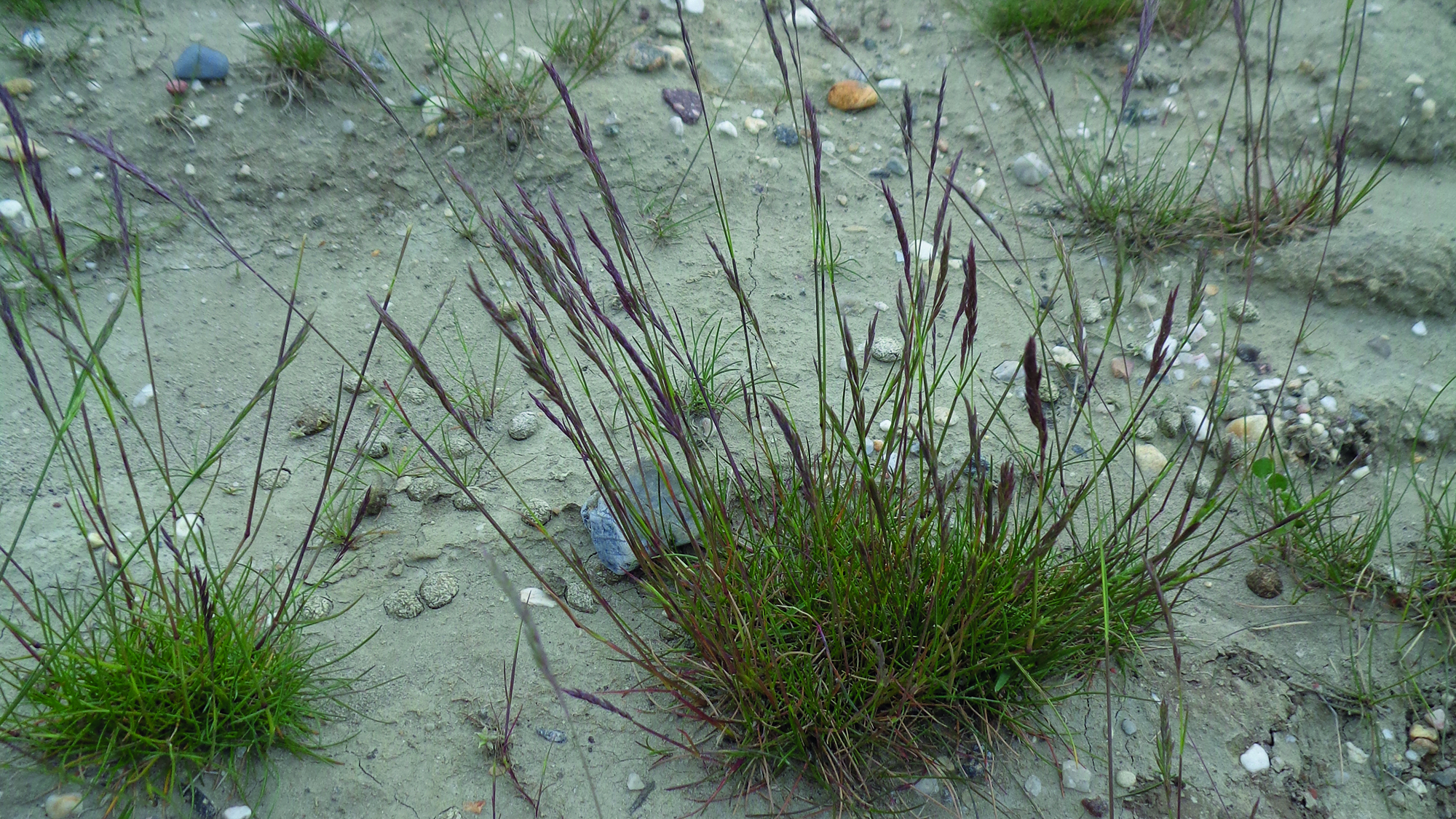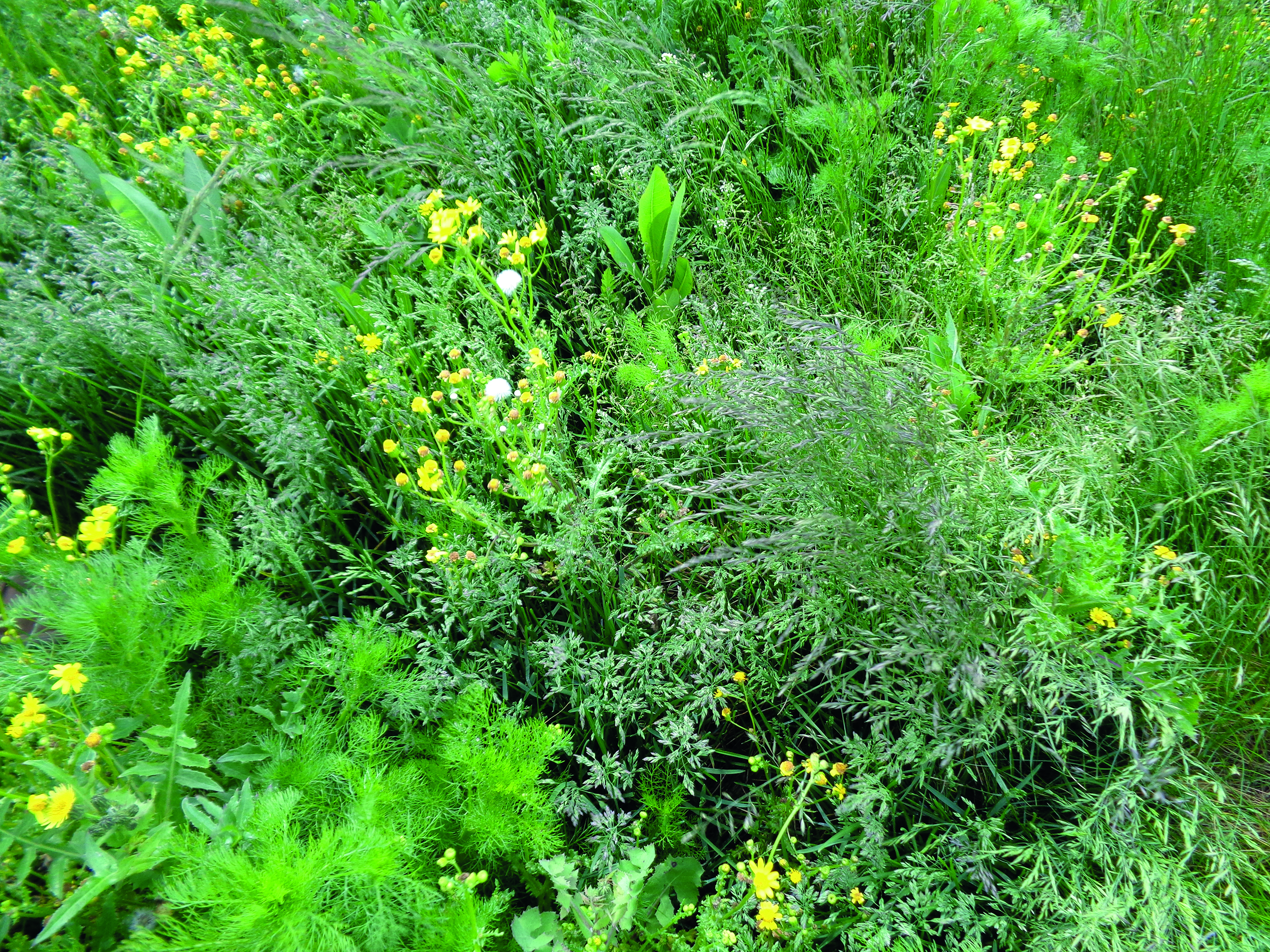How fungi make lunar landscapes bloom
Using substrate waste from mushroom production and sewage sludge compost, the Fraunhofer Institute for Ceramic Technologies and Systems IKTS and its partners Veolia Klärschlammverwertung Deutschland GmbH, the Institute of Waste Management and Circular Economy of TU Dresden as well as the Institut für Holztechnologie Dresden gemeinnützige GmbH have made a landfill site in the Leipzig area flourish. In the future, the researchers also want to use their new recultivation technology to vegetate open-cast mines and old mining dumps – and, as a welcome side-effect, significantly reduce energy consumption in German mushroom cultivation facilities.



Particularly in the case of open-cast mining, the layman may think that the excavators only have to push the earth back into the huge holes in the ground at the end of the extraction process – nature will take care of the rest. In practice, these processes often take decades and must be set in motion at great expense. This is because the machines only extract biologically inactive subsoil without plant roots and microorganisms from under the topsoil. Large quantities of these overburden materials accumulate which could be put to good use elsewhere. If this so-called “overburden conveyor bridge material” were used without further processing, revegetation would be extremely arduous. This depletion effect is further intensified by geological features such as phosphorite nodules, which reach the surface with the overburden and oxidize with the oxygen in the air. These phosphorus oxides then over-acidify the soil and make it uninhabitable for plants.
The partners in the research project “Soil 2” (grant number: 100267811), which is funded by the free state of Saxony with ERDF funds, have set out to change this: with the participation of Fraunhofer IKTS, the partners Veolia Klärschlammverwertung Deutschland GmbH, the Institute of Waste Management and Circular Economy of TU Dresden as well as the Institut für Holztechnologie Dresden gemeinnützige GmbH have joined forces to inoculate inanimate soil with new life. They tested this on a 600-square-meter trial area at a landfill site near Leipzig – with success. In the meantime, grasses, flowers and perennials have begun blooming there again, and animals are also settling in. “We are pleased that we were able to green parts of the landfill so quickly with the new recultivation technologies and that it blends beautifully into the landscape,” emphasizes landfill operator Bernd Beyer.
Fungal sewage sludge mixture buffers phosphorus nodules
The vegetated area not only looks nicer than a barren heap, but also stabilizes the entire ecological and geological balance on site: the roots anchor and stabilize the soil, which they thus protect against erosion. In addition, rainwater can now seep into the soil instead of flowing away or causing washouts on dry, hard ground. Importantly, vegetation and “reanimated” soil stretch the phosphorite nodule effect. Unlike untreated landfill blankets, soil pH no longer slides as much.
This recultivation is possible thanks to a very special recipe that the Saxon researchers, agricultural experts and engineers in the project developed together in elaborate tests. One ingredient for this is sewage sludge compost, which comes from municipal sewage treatment plants in the surrounding area. This contains many microorganisms that provide revitalization for the inactive soil.
The second component comes from mushroom production. Nowadays, these mushrooms are grown in large halls in high shelves, filled with compost and a special substrate. After harvesting, the spent mushroom substrate is usually reused as fertilizer for crops, such as cereals or vegetables. But the substrate has a much greater potential– and the process also wastes a great deal of energy. This is because the substrate has a lot of valuable organic cargo on board, which mushroom producers must sterilize in the oven at great expense to meet regulations. This sterilization alone accounts for around 30 percent of the total energy required in mushroom production. If it were possible to use the substrate elsewhere without sterilization, mushroom producers could save a lot of energy and money and thus contribute to environmental protection.
The project has provided a possible approach to this: instead of bringing the substrate to the fields, the researchers are using mushroom production residues for their recultivation technology. So far, they are still using sterilized substrate because of legal requirements, but experiments have already shown that unsterilized mushroom residues would be even more suitable for breathing life into biologically inactive soil.
Exact composition remains secret
Sewage sludge compost and mushroom substrate are then layered on top of the “base matrix material,” for example, inanimate subsoil from open-pit mines. The exact composition is a secret. It also depends on the particular base matrix material of the mushroom species and the preparation of the additives. Agricultural machinery mixes the materials applied in layers. A seed drill then sows the seeds. After that, the project partners largely let nature take its course.
After only a short time, 80 percent of the heap area treated in this way is covered with vegetation. Observations have shown that the recultivation effect is sustainable: despite the heat waves since 2020, the recultivated area has not reverted to a lunar landscape.
Like a wound closure for the injured landscape
In the view of Nico Domurath, a plant cultivation scientist at IKTS, these successes also have an important social and ecological dimension: “Soil is a very valuable resource that we need to protect,” he stresses. “Unfortunately, we lose an average of 54 hectares of it per day – the equivalent of 76 soccer fields – to housing, roads and mining, for example. What we've developed as part of our project is like a wound closure for the injuries humans have left in the landscape.”
In a follow-up project, the IKTS researchers now want to test the new recultivation technology in the Freiberg area on old mining dumps. There, similar special mixtures are to prevent the rain from washing lead, cadmium, uranium or other heavy metals into the rivers. In a further project, the research team would also like to test its technology on a larger tailings pile. Among other things, this step from the pilot to the industrial scale should help to assess what scaling effects occur and how much it would cost to green large areas of several hectares in this way.
